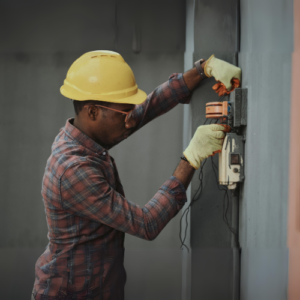Why Expansion Joints Are Crucial for Building Longevity
When it comes to constructing a building, several crucial elements must be considered to ensure its longevity and durability.
One of these essential components is expansion joint, including stainless steel expansion joint cover plates, and wall expansion joint covers. Although often overlooked, these expansion joint play a critical role in ensuring a building’s structural integrity and safety. They are designed to absorb the expansion and contraction of building materials caused by temperature changes, seismic activity, and other external factors. Without proper expansion joint, buildings can suffer from significant damage, including cracks, leaks, and structural failure. In this blog post, we’ll explore why expansion joint are a must-have for any building and why they should never be overlooked during the construction process. Whether you’re a building owner or a construction professional, understanding the importance of expansion joint, including floor expansion joint covers, stainless steel expansion joint cover plates, expansion joints in concrete, and wall expansion joint covers, can help you ensure the safety and longevity of any structure. So, let’s dive in and learn everything you need to know about expansion joint.
The Significance of Building Expansion Joints
Expansion joint are designed to absorb the movement of building materials caused by temperature changes, seismic activity, and other external factors. They are typically installed to allow for the expansion and contraction of building materials without causing damage to the structure. 
Expansion joints, including floor expansion joint, floor expansion joint covers, stainless steel expansion joints cover plates, and wall expansion joint covers, are essential in all types of buildings, including commercial, residential, and industrial structures. They are typically installed in areas where two different building materials meet, such as between concrete slabs or between the building and the foundation.
The importance of expansion joints cannot be overstated. Without them, buildings can suffer from significant damage, including cracks, leaks, and structural failure. This is because building materials expand and contract at different rates when exposed to temperature changes and other external factors.
If there is no room for this movement, the building materials can crack or break, causing significant damage to the structure. Expansion joints, including floor expansion joints, floor expansion joint covers, stainless steel expansion joint cover plates, and wall expansion joint covers, allow for this movement to occur without causing damage, ensuring the longevity and safety of the building.
In addition to ensuring the safety and durability of the building, expansion joints can also improve the building’s aesthetic appeal. They can be designed to blend seamlessly with the building’s architecture, creating a more cohesive and visually appealing structure. This is particularly important in commercial buildings, where the appearance of the building can have a significant impact on its success.
Ensuring Structural Integrity: Role of Expansion Joints
There are several different types of expansion joints, each designed to meet specific needs and requirements. The most common types of expansion joints, such as floor expansion joints, expansion joints in floor covers, expansion joints for buildings, expansion joints for walls, stainless steel expansion joint cover plates, and wall expansion joint covers, include:
- Control Joints: Control joints are designed to control the cracking that occurs in concrete slabs. They are typically installed at regular intervals to create weakened planes in the concrete, allowing for controlled cracking to occur. This prevents uncontrolled cracking, which can cause significant damage to the concrete slab and the building as a whole.
- Expansion Joints: Expansion joints, including expansion joint covers for concrete, serve the purpose of accommodating the natural expansion and contraction of building materials resulting from temperature changes and external factors. They are typically placed in areas where different building materials meet, such as between concrete slabs or at the interface between the building and the foundation.
- Construction Joints: Construction joints are used to create a break in the continuity of the concrete. They are typically installed at the end of the day’s work or the end of a pour. This allows the concrete to be poured in stages and ensures that each pour is properly cured before the next one is started.
- Isolation Joints: Isolation joints are designed to separate different parts of the building to prevent them from coming into contact with each other. This can be particularly important in areas where one part of the building is subject to significant movements, such as a bridge or an earthquake-resistant building.
- Seismic Joints: Seismic joints are designed to absorb the movement caused by seismic activity. They are typically installed in areas that are prone to earthquakes, such as California and other areas along the Pacific Rim. Seismic joints can be designed to absorb both vertical and horizontal movement, ensuring the safety and durability of the building.
Building Safety 101: Exploring Expansion Joints
The benefits of installing expansion joint in buildings are numerous. Some of the most significant benefits include:
- Increased safety: Expansion joint, including floor expansion joint, floor expansion joint covers, stainless steel expansion joint cover plates, and wall expansion joint covers, are essential in ensuring the safety of the building. Without them, the building can suffer from significant damage, including cracks, leaks, and structural failure. This can be particularly dangerous in areas prone to seismic activity or extreme weather conditions.
- Improved durability: By allowing for the movement of building materials, expansion joint can significantly improve the Construction durability of the building. This can help prevent damage caused by temperature changes, seismic activity, and other external factors, ensuring the longevity of the building.
- Reduced maintenance costs: By preventing damage to the building, expansion joint can significantly reduce maintenance costs over time. This can be particularly important in commercial buildings, where Building maintenance costs can be a significant expense.
- Aesthetic appeal: Expansion joint, including floor expansion joint, floor expansion joint covers, stainless steel expansion joint cover plates, and wall expansion joint covers, can be designed to blend seamlessly with the building’s architecture, creating a more cohesive and visually appealing structure. This can be particularly important in commercial buildings, where the appearance of the building can have a significant impact on its success.
Understanding the Must-Have: Expansion Joints in Buildings
When choosing expansion joint, including floor expansion joint, floor expansion joint covers, stainless steel expansion joint cover plates, and wall expansion joint covers, there are several factors to consider. Some of the most important factors include:
- Building location: The location of the building can have a significant impact on the type of expansion joint that is required. Buildings located in areas prone to seismic activity, for example, may require more robust expansion joint than buildings located in areas with more moderate weather conditions.
- Building materials: The type of building materials used can also impact the type of expansion joint that is required. Concrete, for example, may require a different type of expansion joint than steel or wood.
- Building design: The design of the building can also impact the type of expansion joint that is required. Buildings with complex designs may require more specialized expansion joint than buildings with simpler designs.
- Budget: Budget is also an important consideration when choosing expansion joint. While it’s important to choose high-quality expansion joint, including floor expansion joint, floor expansion joint covers, stainless steel expansion joint cover plates, and wall expansion joint covers, to ensure the safety and durability of the building, it’s also important to stay within budget constraints.
By considering these factors and choosing the appropriate expansion joint, including floor expansion joint, floor expansion joint covers, stainless steel expansion joints cover plates, and wall expansion joint covers, you can ensure the safety, longevity, and aesthetic appeal of any building while keeping maintenance costs under control.

